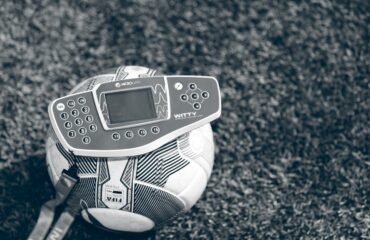High-speed training in a specific context in soccer: transition games.
Asian-Clemente J, Rabano-Munoz A, Requena B, Suarez-Arrones L.
This study compares the load of three soccer training tasks: a transition game, a small-sided game with a change of playing area, and a large-sided game in 20 young elite players. Transition games produced greater Distance Covered DC at >18 km·h-1, peak speed and number of Acc >2.5 m·s-2 than both sided games, that in turn produced more total DC and player load. Coaches could use transition games to train high speed running in counter-attack contexts.
Preliminary Report on the Train the Brain Project: Sensorimotor Neural Correlates of Anterior Cruciate Ligament Injury Risk Biomechanics – Part I.
Grooms DR, Diekfuss JA, Slutsky-Ganesh AB, Ellis JD, Criss CR, Thomas SM, DiCesare CA, Wong P, Anand M, Lamplot J, Simon JE, Myer GD.
Peak knee abduction moment during landing of 10 female high school soccer players was utilized for group determination into high injury risk (n=5) and low injury risk (n=5). Athletes with high injury risk biomechanics had lower neural activity (fMRI) in one sensory-motor cluster for isolated knee joint control (precuneus) and greater brain activity for the multi-joint leg press in two cognitive-motor clusters: frontal cortex and posterior cingulate gyrus. The high injury risk group lower relative engagement of neural sensory resources to control the knee joint may elevate demand on cognitive-motor resources to control loaded multi-joint action.
Preliminary Report on the Train the Brain Project: Neuroplasticity of Augmented Neuromuscular Training and Improved Injury Risk Biomechanics – Part II.
Grooms DR, Diekfuss JA, Slutsky-Ganesh AB, DiCesare CA, Bonnette S, Riley MA, Kiefer AW, Wohl TR, Criss CR, Lamplot J, Thomas SM, Barber Foss KD, Faigenbaum AD, Wong P, Simon JE, Myer GD.
This study found that after 6 weeks of Neuromuscular Training augmented with real-time biofeedback (aNMT) in 10 high school female soccer athletes, sensory (precuneus), visual-spatial (lingual gyrus), and motor planning (pre-motor) brain activity measured by fMRI increased for knee specific movements, and sensorimotor cortex activity for multi-joint movements decreased. In association, knee abduction moment during landing also decreased. This suggests that aNMT facilitates recruitment of sensory integration centers to support reduced injury risk mechanics and improve sensorimotor neural efficiency for multi-joint control.
Effects of Football Training and Match-Play on Hamstring Muscle Strength and Passive Hip and Ankle Range of Motion during the Competitive Season.
Moreno-Pérez V, Rodas G, Peñaranda-Moraga M, López-Samanes Á, Romero-Rodríguez D, Aagaard P, Del Coso J.
This study in 26 semi-professional football players along a season found that hamstring muscle strength increased in the dominant (+11.1%) and non-dominant (+10.5%) limbs in the mid-season, decreasing in the dominant (-9.3%) limb at end-season. Hip extension ROM decreased in mid-season in the dominant (-31.7%) and non-dominant (-44.1%) limbs, and further decreased at end-season (-49.0% and -68.0%). Interlimb asymmetry for hip IR ROM increased by 57.8% from pre-season to mid-season. In summary, while hamstring muscle strength increased during the first half of the football season in football players, a progressive reduction in hip extension ROM was observed throughout the season. The reduced hip extension ROM suggests a reduced mobility of the hip flexors, e.g., iliopsoas, produced by the continuous practice of football. Consequently, hip-specific stretching and conditioning exercises programs should be implemented during the football season.
Soccer players show the highest seasonal groin pain prevalence and the longest time loss from sport among 500 athletes from major team sports.
Mercurio M, Corona K, Galasso O, Cerciello S, Morris BJ, Guerra G, Gasparini G.
This study of 506 team sport athletes (soccer, futsal, basketball, volleyball, and water polo players) found that 123 players (24.3%) reported groin pain. Overall, soccer players reported the highest groin pain prevalence (32.5%) followed by futsal (25.5%), basketball (25.2%), water polo (17.6%) and volleyball players (13.6%). The mean time loss from sport due to groin pain was 60.3 ± 66 days in soccer, 41.1 ± 16.6 days in futsal, 31.5 ± 18 days in water polo, 37.2 ± 14.2 days in basketball and 50.8 ± 24.6 days in volleyball. Significantly lower Copenhagen Hip and Groin Outcome Score HAGOS values were found in athletes with groin pain. Longer time loss from sport was correlated with lower HAGOS values in soccer and futsal players with groin pain.
Football players with long standing hip and groin pain display deficits in functional task performance.
Roughead EA, King MG, Crossley KM, Heerey JJ, Lawrenson PR, Scholes MJ, Semciw AI, Mentiplay BF, Kemp JL.
This study compared 183 (38 women) football players with a self-reported history of >6months of non-time-loss hip/groin pain and a positive flexion-adduction-internal rotation test, and 61 (14 women) asymptomatic players. Players with hip/groin pain and lower HAGOS score could not hop as far and completed fewer one leg rise (OLR) repetitions. Symptomatic women, but not symptomatic men, with worse HAGOS scores had lower Side Bridge endurance.
Physical loading in professional soccer players: Implications for contemporary guidelines to encompass carbohydrate periodization.
Anderson L, Drust B, Close GL, Morton JP.
This paper provides a contemporary overview and theoretical framework for which to periodize CHO availability for the professional soccer player according to the “fuel for the work” paradigm whereby CHO intake is adjusted day-by-day and meal-by-meal according to the fuelling demands and specific goals of the upcoming session. Indeed, aside from the well-recognised role of muscle glycogen as the predominant energy source during match-play, it is now recognised that the glycogen granule may exert regulatory roles in activating or attenuating the molecular machinery that modulate skeletal muscle adaptations to training.






You must be logged in to post a comment.